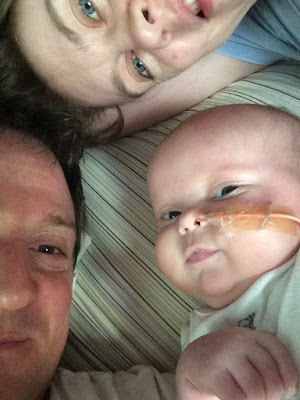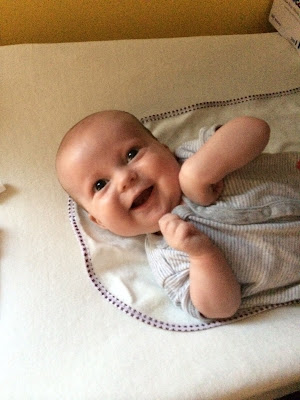We had our second meeting with the transplant team this week. The first time we met, we left feeling
pretty queasy about what seemed, at least in the abstract, like a very menacing and risky procedure. This time was different.
For several reasons, the doctor (
Dr. Loechelt) is confident that Sam's odds of making it through the transplant relatively unscathed are very good. Top of the list: they have two donor candidates in the pipeline--both young males, which is a big plus--that are as well matched to Sam as they can be without being siblings. A good match means that Sam's chances of having serious problems with
Graft-Versus-Host-Disease (GVHD) are lower, perhaps much lower, than they would otherwise be.
It also means that the 14-day pre-transplant drug regimen Sam will soon endure to lay waste to his current immune system can be less intense, and therefore less dangerous to Sam and his internal organs. And that
also means a lower risk of GVHD*.
Also very good: Sam's HLH continues to be inactive, and that bodes well for the transplant. It's much better that the disease is basically dormant than still agitating and causing internal mischief.
We talked for awhile about the dozens of possible side-effects associated with the pre-transplant medications and were soothed to learn that a good number of the really nasty side-effects that made us so queasy at the first meeting are, while
possible, pretty unlikely. Which means we can spend less emotional energy entertaining fears that coma, major organ damage, and even death are dangers we'll likely face in the coming weeks and months.
It is true that Sam will lose the soft-and-delicate-if-not-yet-thick-and-luxurious hair he's worked so hard to grow; that will be hard for us to see. (As a good friend recalled of his own son's scalp-revealing chemotherapy from a few years ago, seeing the hair fall out means you can no longer even pretend that something isn't seriously wrong.) But we've been through this before, back when Sam was intubated for 10 days and you couldn't look at him without being reminded that he wasn't healthy.
Otherwise, the pre- and post-transplant phases have the potential to be pretty normal. Sam will be hooked up to lots of things again, and he may be somewhat uncomfortable (e.g., nauseated) during chemo. But he won't necessarily have to be sedated or intubated or anything else that would severely affect his general day-to-day lifestyle--except that he'll be in a hospital room being groped and poked and prodded and tested at all hours of the day and night.
If there was anything upsetting about the meeting, it was learning that the months immediately following transplant will likely be, even under the best of circumstances, exhausting and anxiety-filled. Sam will have a brand new but very under-developed immune system, and we will have to watch him for even the slightest signs of rejection and GVHD. If he so much as farts in the wrong direction we will be on the phone and, maybe, headed to the hospital for tests. No fun.
On the other hand, I've recently realized that Alyson and I actually find ourselves talking about life after the transplant. And that's a hell of a lot better than wondering if we'll ever get there in the first place.
* If I have this right, high-intensity chemo is, shall we say, irritating to the body. When the new blood cells arrive, they are more likely to attack the host if they perceive this irritation. So, less chemo means less irritation means less risk of grafted cells attacking Sam.













